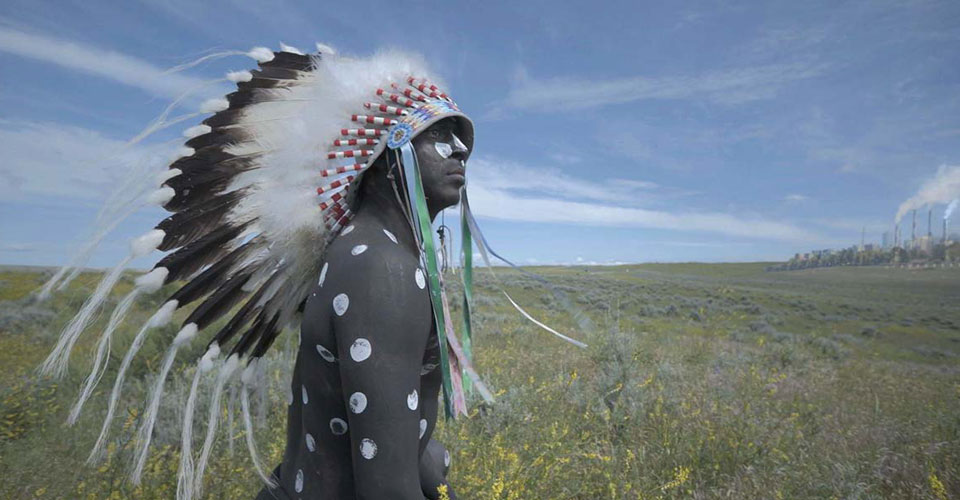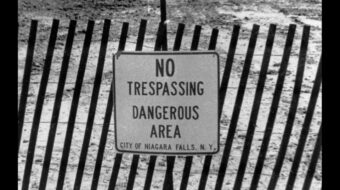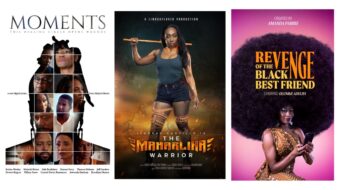
It’s been such a strange year for film festivals. Events that usually gather hundreds or even thousands of movie fans sitting in close proximity are out of the question during the COVID-19 season. My favorite of them all, the Toronto International Film Festival (TIFF), is no exception. It’s now in its 45th year, and I’ve covered at least the last 35 for this periodical. Long considered by many to be among the most significant film festivals in the Western Hemisphere—it was originally called “The Festival of Festivals”—like other film festivals, it too had to reinvent the traditional festive experience this year.
Normally sporting over 350 films, and often the launch pad for some award-winners, this year TIFF limited feature films to just over 50 titles that were mostly shown online, and only in Canada. But it introduced to the public, press and industry some exceptional fare that will be shown on streaming channels around the world and eventually in film houses once they reopen. Also, around 4,000 international professionals participated digitally online. Being a marketing festival for the film industry, many great films were sold for distribution, including several that will be included in my serial coverage of TIFF.
The perfect film chosen to open the Canadian festival is the documentary based on the Canadian best seller by First Nation writer Thomas King, entitled The Inconvenient Indian (see trailer), which eventually went on to win the TIFF 2020 People’s Choice Best Documentary Award. It’s no coincidence that for many years each and every event at TIFF starts with a statement asking people to reflect on “the land we are on, who the traditional keepers of the land are, what the treaty relationship is, or if it’s unceded territory.” Then they list the tribes who once were in abundance, and conclude that “we are extremely grateful to work on this land.”
As part of the Share Her Journey program, TIFF featured women actors and directors, and it was Michelle Latimer who took on the difficult task of distilling the dense history in the book from literary to cinematic form. Much like the U.S. National Book Award winner, Indigenous People’s History of the United States by Roxanne Dunbar-Ortiz, the book is crammed with historical facts, with many moving stories that are not that unknown to most Canadians. The book was written over 10 years ago, but the new version has an “Afterword” which brings the story up-to-date and is used as the basis for the film.
Latimer chose to avoid the typical “expert/academic” interviews, instead using Natives and local people speaking naturally who were later identified at the end of the film. Latimer also chose to have author Thomas King himself as the narrator of this time travelogue through the history of the Canadian treatment of the First Nation people. Canada, which shares with the U.S. the tragic history of Indian removal and land expropriation, is making a much more serious attempt at rectifying the injustices and righting the wrongs of history. One of their major criminal acts was removing Native children from their homes and families and placing them in English-speaking Christian schools to be “civilized and taught the White man’s ways.” King writes, “the church kidnapped Indian children and made them religious…the government felt ‘we must civilize them or abolish them.’” The aim was to get rid of the tribal system and assimilate the Indians.
Thomas King’s soft, contemplative but confident and witty narrative style incorporates irony and sarcasm, expressing such ideas as “I’m not the Indian you had in mind” and “people expect Indians to look like Indians.” He reveals “the classic 1920s doc Nanook of the North was done to make Indians look like primitives, even though many were as advanced as white civilization at the time.”
He observes that many people use the excuse “if we knew then what we know now, we wouldn’t have done what we did,” relieving themselves of any responsibility. Ignorance is the defense. But he adds, “perhaps it’s unfair to judge the past by the present—but it’s also necessary.”
The scenic views of Native vistas are awesome, and the film includes great black and white footage from cinematography’s early years. The expanse of time is also referenced in noting that their forms of education served the community for tens of thousands of years. And the value systems got passed down through the language, which is not easily translated into today’s terms.
One current scene shows a tour company that offers reenactments of Indian battles. King warns that, “of course, it didn’t really happen that way. The past is not real. It’s only stories about the past. There were no cell phones or cameras on the battlefield in 1870—so this is the victor’s imagination.”
King’s writing exposes the real reasons for the government’s actions. “‘What do Indians want?’ is often asked, but the real question is ‘what do whites want?’ and the issue has ALWAYS been—land.”
Natives were systematically removed from their lands so whites would have access to resources, and this process goes on to this day.
First Nation film producer Jesse Wente summed up the title when he explained in an interview, “The ultimate sign of us being inconvenient is when Indigenous people live exactly as we have for millennia”—perhaps even more inconvenient than protests and getting in the way of colonialism!
The jury that awarded the 90-minute film Best Canadian Feature described it as “a deeply thought-provoking and scorching indictment” of the treatment of First Nation people. “Expansive yet pulsing with energy and life, it ponders big questions and harkens the coming of a new era of truth and reclamation.”











Comments